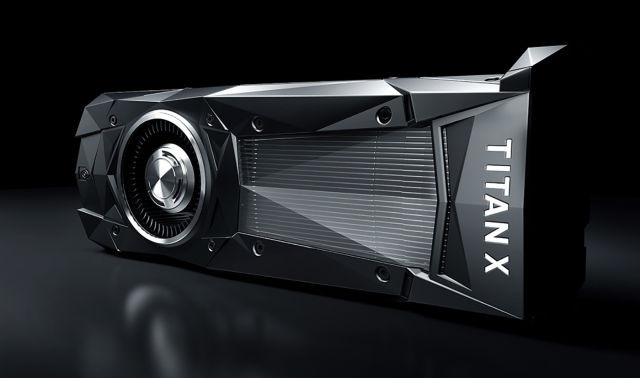For the past two months Nvidia's GTX 1080 has stood tall at the top of GPU charts. Capable of 8.2 teraflops of floating point compute power, it has been uncontested, and it's not even close given that the next best thing is 20% less powerful and also made by Nvidia.
But now a new king is ready to enter the market: the Nvidia Titan X. Sound familiar? Well, it is and it isn't. The new Titan X looks a lot like last generation's card of the same name, but isn't even comparable. While the GM200 Titan X had 8 billion transistors and a 336 GB/s memory bandwidth, Nvidia's new card is equipped with 12 billion transistors and 480 GB/s memory bandwidth, among other vital elements that contribute to performance. The end result is a jump from 6.14 teraflops all the way up to 11 teraflops, or nearly double the performance of what was considered top-of-the-line only 18 months ago.
To put this into perspective, the latest and greatest graphics card that AMD has released is the RX 480. Although its price point of $200/$249 is admirable, its 5.5 teraflops of compute power is only half that of the Titan X. We're talking an increase of 100% in performance.
Nvidia lists the following facts about the card on its website:
- 44 TOPS INT8 (new deep learning inferencing instruction)
- 12B transistors
- 3,584 CUDA cores at 1.53GHz (versus 3,072 cores at 1.08GHz in previous TITAN X)
- Up to 60% faster performance than previous TITAN X
- High performance engineering for maximum overclocking
- 12 GB of GDDR5X memory (480 GB/s)
Some consumers have lamented at the fact that the card doesn't come equipped with HBM2. Let's be real here, this card is ridiculous with or without HBM2.
With this new monster in its line-up, Nvidia now dominates the totem pole of modern graphics cards. It competes in the mid tier with its $249 – $299 GTX 1060. Meanwhile, it has a monopoly on high and enthusiast tiers with the GTX 1070, GTX 1080, and now the Titan X.

As usual, you're going to pay a lot for that extra performance as the Titan X is not just twice the price of the RX 480. As a matter of fact, it's around five to six times the price, with a $1200 MSRP, making it the single most expensive consumer-grade graphics card in years.
Nvidia's 3+ billion dollars of investment into the Pascal line of graphics cards has paid off in a big way. It effectively controls the market, making its name synonymous with high tier gaming performance, and along the way has made the industry's goal of a 4K 60FPS standard more tangible than ever before.







